
Kunming is in Yunnan, one of the provinces in the South of China. Kunming has a population of only 6.5 million people, amounting to about 0.5% of the population of China. Kunming is known as "Spring City". It is near the tropic of cancer and about 1,900m above sea level, and the temperature is supposed to be even throughout the year. It was certainly pleasant while I was there.
Yunnan has some beautiful attractions that are far from Kunming, an hour's flight or most of a day's bus or train journey, and I did not see these attractions. They include the alleged location of Shangri-La and some very high mountains near the border with Tibet.
Instead, I saw what Kunming and the immediate surroundings have to offer. This includes a temple, a mountain, Green Lake park, and a few observations about daily life.
The first observation is that it is a challenge to be in a country where I don't speak the language, and I have a hard time reading more than the very basics. I learned quite a few Chinese characters back when I was learning Japanese, but I have forgotten a lot, and the Chinese have simplified the characters in ways that are sometimes hard to recognize.
Also, unlike the more famous towns in other parts of Yunnan, Kunming doesn't seem very oriented to foreign tourists. In some ways that is a benefit. Foreign tourists are left to wander more or less undisturbed, and I found the locals often extremely helpful whenever they spoke any English. That is much better than is often the case in touristy places, where the locals are more often focused on their own revenue than on being helpful.
On the other hand, the number of people comfortable enough with English to actually admit it to a live foreigner is rather small, so sometimes it was hard for me to get even basic information across. Personally, I see this as part of the adventure of travel, and nothing particularly distressing having happened so far, all is well.
Along one particular street in Kunming, Guang Hua Street, there were several charming old wooden buildings. I am sure they were preserved on purpose, as everything in the surrounding streets is newer.






Nearby was a Chinese MacDonald's.

A very Chinese-looking gate.

And some modern buildings with interesting architecture.


Not too far away is 1000-year-old Yuan Tong temple. Most of the buildings in the temple are probably not 1000 years old, and restoration was ongoing as I visited.

The temple is beautiful.


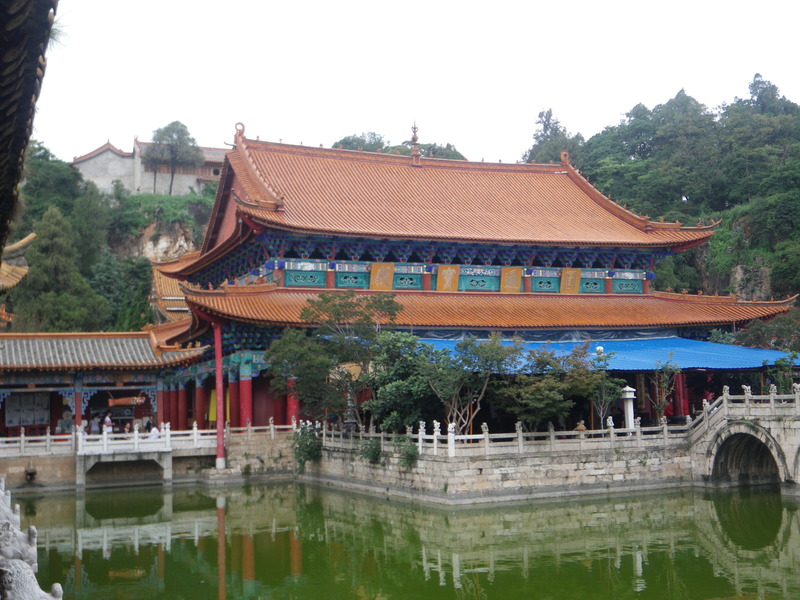


The architecture of the temple is centered on a pagoda in the middle of a little lake.

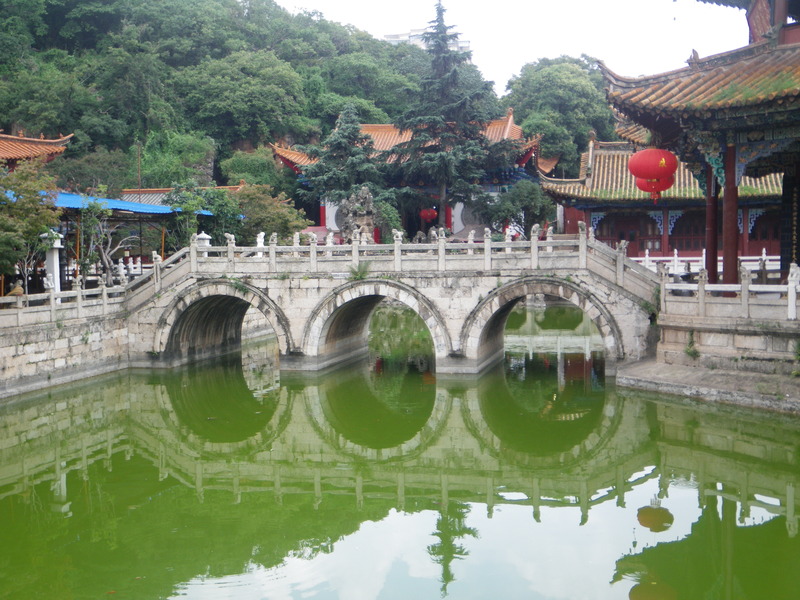

At all times when I have been in a park in Kunming, I have seen people doing a kind of dance that I imagine is for exercise, though the motions remind me of the Bon dances that are common in this season in Japan and even in Hawaii. Most of the participants I saw were middle-aged women, though all ages and both genders were represented.


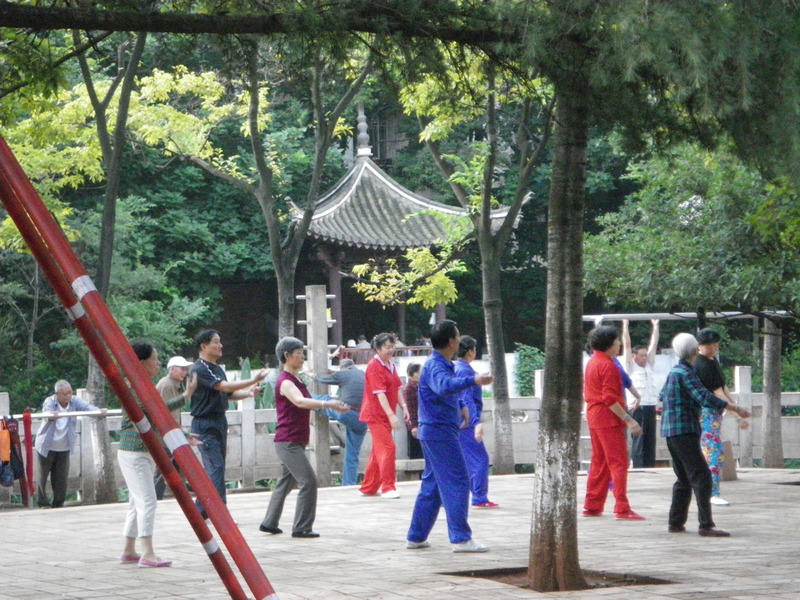

However, one group was different. I was told they were from the Bai ethnic group, which is more common around the city of Dali in western Yunnan. The women wore traditional clothing. This was the only dance group that had a substantial group of spectators watching. Some of the dancers seemed very skillful and I thought they were enjoying what they were doing, rather than just performing. They did not seem to be following a fixed script.
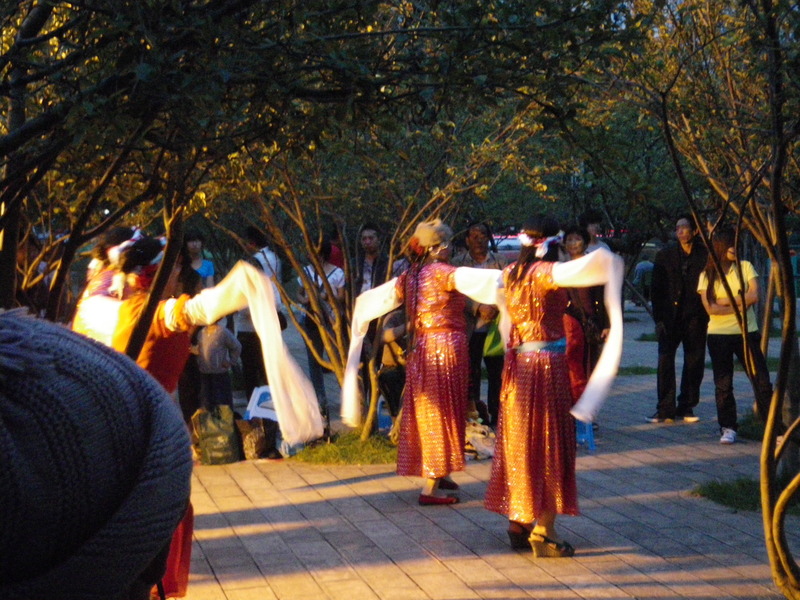
You can see a 45MB video here, and a rather dark 2MB video here.
To my pleasant surprise, almost all of the motorcycles in Kunming are electrical. They have a charging plug under the seat, and no exhaust.
Being electrical, they produce no fumes and very little noise except when the driver sounds the horn.
This makes walking along the roads a lot more pleasant than in many other parts of the world where motorcycles often contribute significantly to the pollution I experience.
Because almost all of the motorcycles are electric (I saw very few that were not), I assume there is a government mandate of some sort. I hope the idea catches on in other places too, and maybe even extends to cars and buses. It would make walking along the street a lot more pleasant!
Kunming is near a large lake, Dianchi or lake Dian, the sixth largest freshwater lake in China. The East side of the lake is relatively flat, but on the West side are some small mountains called, appropriately enough, the West mountains, Xi Shan.


The Xi Shan mountains have a beautiful mixed conifer and deciduous forest with an abundance of cypresses, and a few beautiful buildings as well.



The views of the lake from the top are very nice.

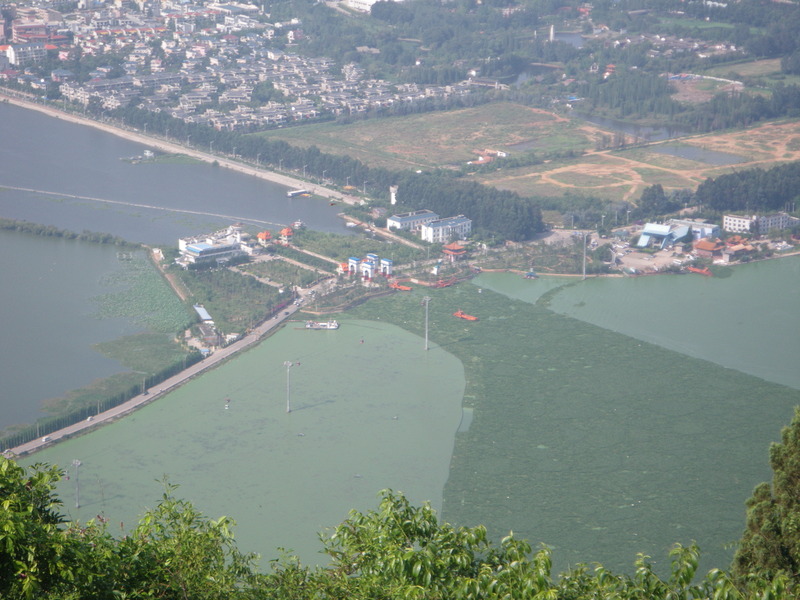


The center of Kunming is at the top right in the last picture above. A more zoomed in view is in the next picture.

The side of Xi Shan overlooking the lake is quite steep.

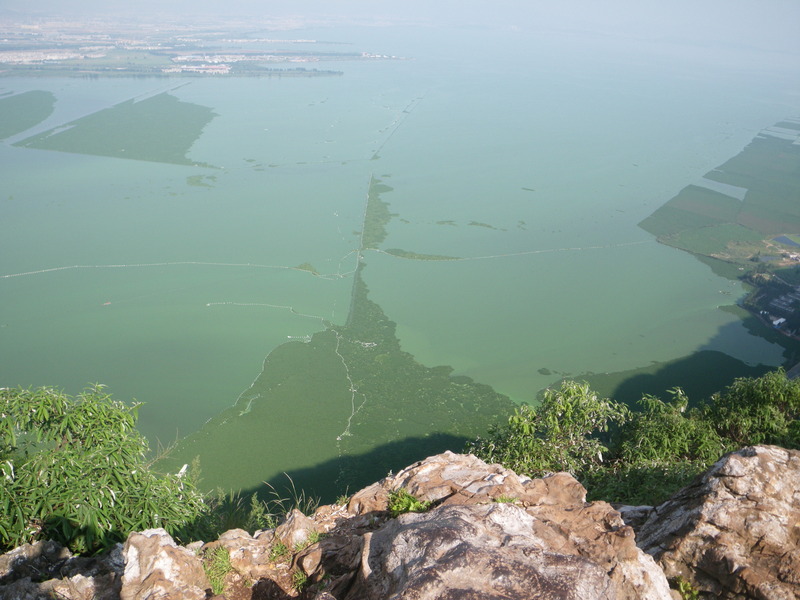
In one particularly beautiful spot, an observation post has been called the Dragon Gate. The place I reached was marked with these two characters, which mean "dragon" and "gate", so I think I was at the right spot, but what I found did not quite match the drawings I saw on the map, so I am not certain.



I am happy to report that squirrels live in this area.

I was last in China in 1989, a few months after the demonstrations in Tien-An-Men square. At about that time, the Berlin wall fell and Communism ended in in Europe, but continued in China.
My reason for visiting China at the time was that I had just spent a year in Japan, and taking a boat to China ("the slow boat to China", as one of my friends said at the time) seemed like a good way to end the year.
Back then I spent three days in Shanghai before going on to Hong Kong, which was still under British rule. I remember that the vast majority of the buildings in downtown Shanghai were 2-storey buildings, and most of the traffic was bicycle traffic. From pictures I have seen, buildings now have gotten much taller. Certainly Kunming has its share of tall buildings, and in that respect, is undistinguishable from other large cities worldwide (except, thankfully, Rome and several other Italian cities).
